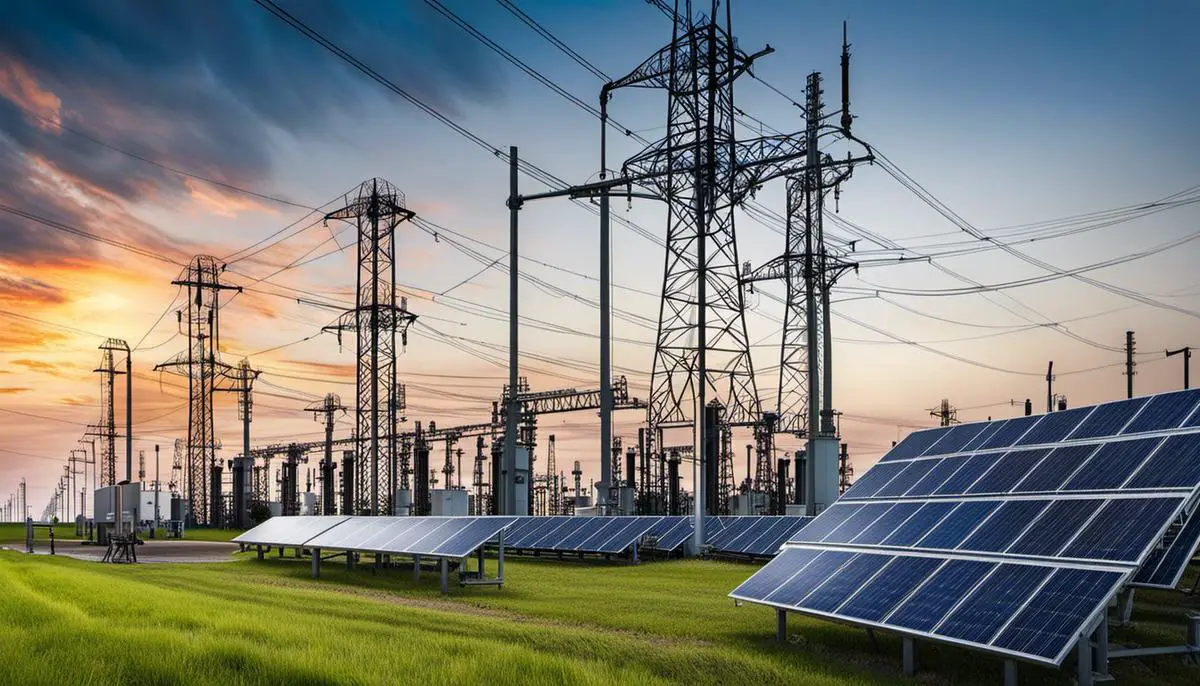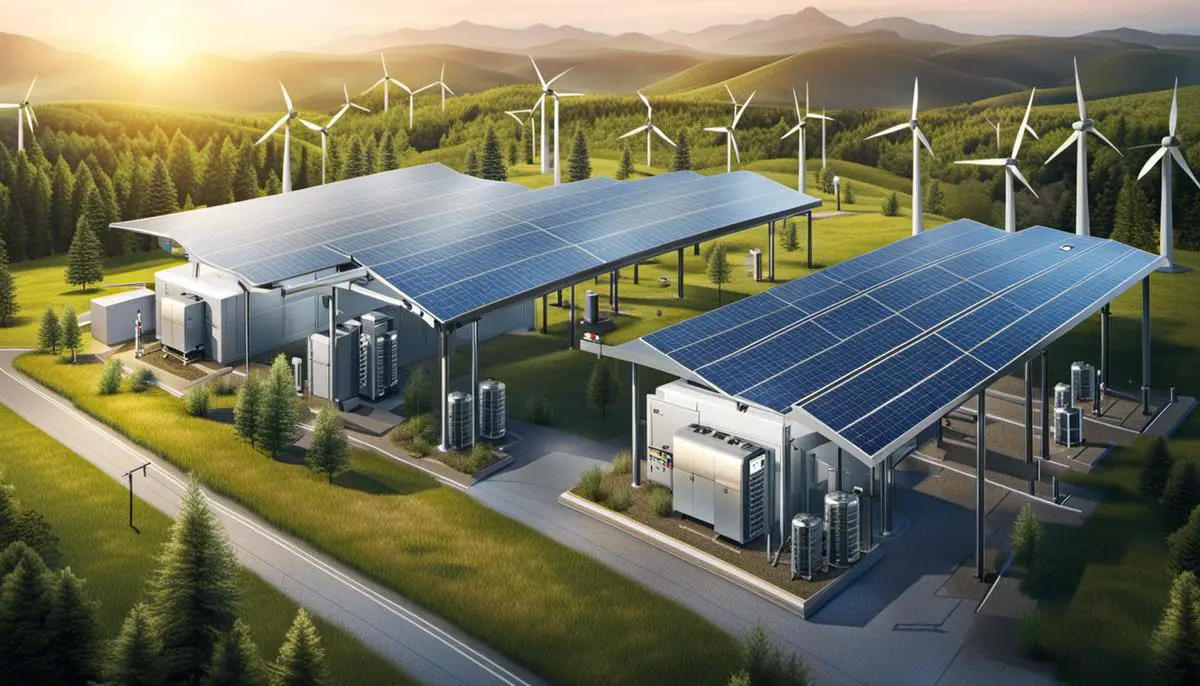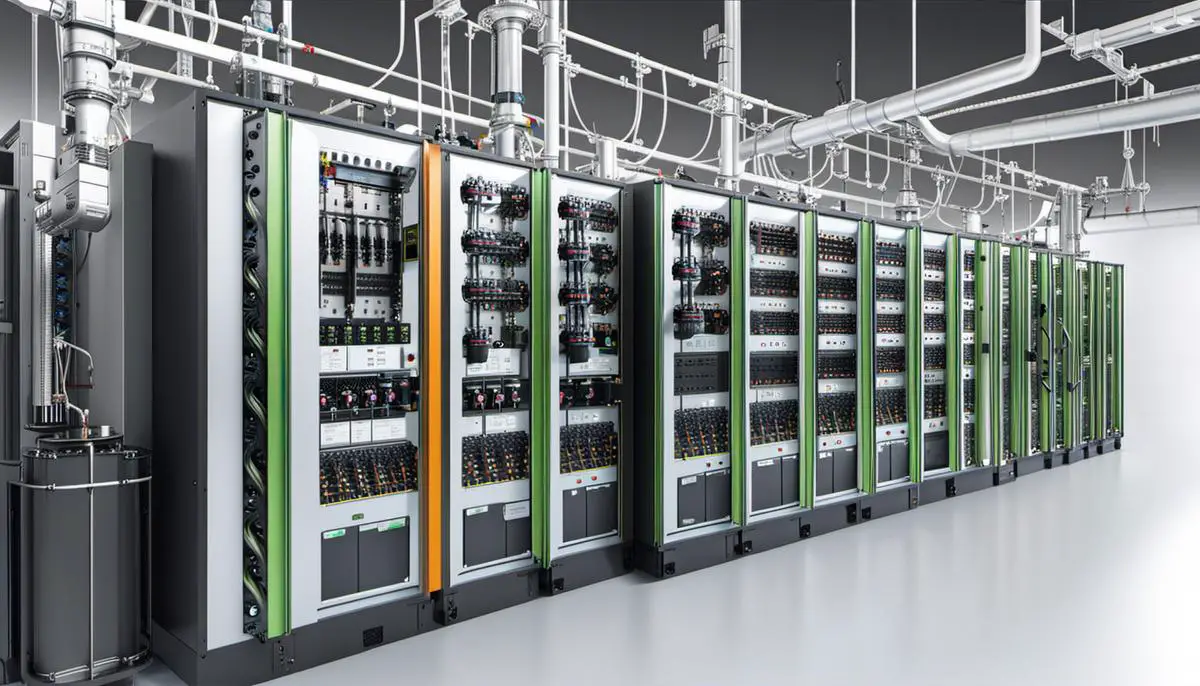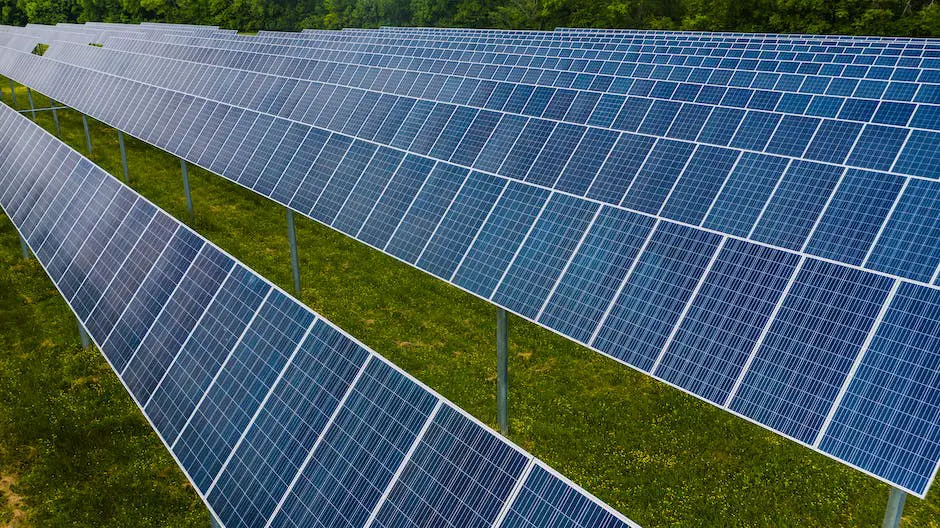Demystify Substation Automation for Renewable Energy: In today’s technologically driven world, our reliance on energy, especially renewable sources, has shown a substantial increase. To efficiently manage and use this evolving energy dynamic, technologies like substation automation play an instrumental role. Substation automation, a critical component in smart grid technology, enables the efficient management of power substations, cutting down on manual labor and reducing human error. This essay serves to enlighten the reader on the functionality of Substation Automation, its advantages, challenges, and specific importance in harnessing renewable energy. Moreover, it sheds light on the future trends in this technology, offering a glimpse into what the future of energy management might entail.
Understanding Substation Automation (Demystify Substation Automation for Renewable Energy)
Understanding Substation Automation
Substation automation refers to using control and data acquisition equipment to automate the functions of a power substation. This equipment includes a variety of sensors, controls, breakers, and communication technology. With an automation system in place, a substation becomes capable of controlling and monitoring equipment and processes remotely, thereby reducing human intervention and minimizing errors.
Substation automation systems deliver real-time information, enabling more efficient operation and maintenance. Such systems involve a high degree of automation to handle tasks such as energy measurement, fault detection, and event logging.
The core elements of substation automation include hardware components like programmable logic controllers (PLCs), remote terminal units (RTUs), intelligent electronic devices (IEDs), and software applications.
Major Components of Substation Automation
An integral component of substation automation is the IED, which is programmed to perform control, protection, and measurement functions. It can gather and analyze data from multiple sources and make decisions independently.
Enhancing Efficiency and Safety: The Power of HMI Software
Another major component is the communication network, which allows for the exchange of information between IEDs and control centers.
The energy management system (EMS) is also a key player in substation automation. The EMS aids in monitoring, controlling, and optimizing the performance of the power generation, transmission, and distribution process.
Finally, there are gateway devices or protocol converters, which help in connecting control systems with multiple protocols, making the system interoperable and flexible.
The Significance of Substation Automation in Renewable Energy
Substation automation is a pivotal part of the renewable energy sector. Given that renewable energy sources, such as wind farms, solar parks, or hydroelectric power stations, are often found in distant, hard-to-reach locations, manual supervision is not only time-consuming but also ineffective.
Thanks to automation technologies, it’s possible to remotely monitor and control substations, thereby enhancing their reliability and efficiency. Take a wind farm, for instance; automated substations can keep an eye on the wind’s velocity and direction and alter the tilt of the wind turbine blades as needed for optimal power generation.
Substation automation can also harness the inherent variability of renewable energy sources, enabling production prediction and demand management. This is essential for maximizing the use of renewable energy, minimizing waste, and guaranteeing a consistent supply of power to the grid.
Furthermore, substation automation can help tackle the challenges associated with integrating renewable energy into the power grid. Through the input provided by IEDs, operators can swiftly detect and rectify issues that may hinder the grid’s smooth operation — such as unexpected power surges or frequency variations — in real time.
In essence, substation automation is vital not just for improving the operations of power substations, but also for promoting better optimization and incorporation of renewable energy into the power grid.

Advantages and Challenges of Substation Automation
Appreciating Substation Automation and Its Value for Renewable Energy
At its foundation, substation automation is a method employed in electrical power systems to utilize data obtained from a series of intelligent electronic devices (IEDs) within substations. The purpose of this data application is two-fold: it enables remote control and supports the optimal usage of the substation. The method is gaining traction given its potential in enhancing efficiency and reliability, notably in the realm of renewable energy operations.
The demand for substation automation systems in the renewable energy era is driven by the dynamic and unpredictable nature of renewable energy sources. Given these energy sources are highly dependent on ever-changing environmental circumstances, they demand far more extensive monitoring and control compared to traditional, fossil fuel-based energy sources.
Understanding Substation Automation & IoT Concepts: A Complete guide for beginner
Advantages of Substation Automation in Renewable Energy
One of the main benefits of employing substation automation in the renewable energy sector is improved efficiency. The automation process allows technicians to manage and adjust the energy sources remotely, improving operational efficiency. Technicians can utilize real-time data to identify potential issues and make the necessary adjustments, resulting in minimized downtime.
Moreover, the implementation of substation automation significantly increases reliability. The automation guarantees continual monitoring of power flows and devices. This continual monitoring leads to quick detection of possible faults and immediate action to prevent or reduce power outages, critical when dealing with erratic renewable energy sources.
Another advantage of automation is the convenience of remote control. The ability to operate and manage the substation from a remote location reduces risks for technicians and simplifies the process. It also saves time and resources by eliminating the need for manual monitoring, particularly beneficial in remote or hard-to-reach renewable energy generation sites.
Challenges in Implementing Substation Automation in Renewable Energy
While the advantages are clear, there are also challenges in implementing substation automation. Technical difficulties and requirements often present initial hurdles in the implementation process.
Installing an automation system requires a high initial investment, mainly due to costs for IEDs, software, and infrastructural adjustments. This cost can be inhibitive for small-scale renewable energy plants, presenting a significant barrier to adoption.
Another challenge is the complex nature of automation. Implementing and managing substation automation requires a specific set of technological skills and a deep understanding of the systems involved. The lack of trained personnel can delay the proper installment and operational continuity of automated systems.
Finally, although automation reduces the risk of manual error, it opens the door to a new potential risk -cyber threats. Automated substations could become targets for cyber-attacks seeking to disrupt power supply, an issue that must be thoroughly addressed throughout the system’s design to ensure robust security.
Turning Challenges into Opportunities
Overcoming the hurdles associated with substation automation for renewable energy sector is entirely plausible. Collaborative efforts and strategic funding from both private and public sectors can significantly decrease costs and provide platforms for education and training. Moreover, strengthening cybersecurity protections can counteract potential threats and pave the way for a broader and more successful implementation of automation in the renewable energy field.
What is Remote Terminal Unit? A Basic Guide
The role of substation automation in renewable energy holds promise for the future, emphasizing efficiency, dependability, and remote management. Even with the challenges involved, the inherent advantages are making these systems a valuable part of our renewable energy future.

Substation Automation in the Renewable Energy Industry
The Role of Substation Automation in Renewable Energy
Substation automation plays a paramount role in handling power derived from renewable sources like wind, solar, and hydroelectric energy. Substation automation systems (SAS) are engineered to automate and govern the operations of substation infrastructure and the high voltage capacity from renewable energy sources. The system incorporates various intelligent electronic devices, programmable logic controllers, and other technologies to boost efficiency in renewable energy implementation.
Cirebon Power Substation Automation Training
Role of Substation Automation in Renewable Energy
The renewable energy sector significantly relies on substation automation for effective power management, fault detection, and real-time response. The SAS provides grid operators with valuable data on power generation and flows, allowing them to make informed decisions about power distribution and management. The automation also helps predict and prevent potential disruptions, thanks to predictive analysis capabilities.
Enhancing Power Handling Efficiency
Substation automation greatly enhances the handling of power in renewable energy systems. It provides real-time monitoring and control of the power transmission process, increased power system reliability, power quality measurement, and fault detection. Through automation, substations can effectively convert the power generated by wind, solar, or hydro resources into consumable electricity, meeting the demand in a more stable and efficient manner.
Real-World Examples
In the real world, examples of substation automation in the renewable energy sector are plentiful. In China, for instance, a solar power plant in Dunhuang utilizes a highly automated substation to effectively handle the 10-megawatt power generated from solar panels. The system not only ensures a steady flow of power to the grid but also provides predictive maintenance data and real-time performance metrics.
In Portugal, a wind farm relies on the substation automation system to maintain the balance between power generation and delivery to the grid. Automated substations monitor wind speeds and adjust turbine operations accordingly, ensuring optimal power generation and minimizing the risk of equipment failure due to extreme weather conditions.
Driving Efficiency with Green Energy
The role that substation automation plays in the effective management of green energy resources cannot be overstated. This technology enables intelligent control and distribution of power, effectively reducing energy waste. The predictive capabilities and real-time responsiveness of substation automation systems allow renewable energy sources to perform optimally. As a result, this minimizes grid instability and energy loss, further bolstering our efforts towards environmental sustainability.

Future Trends in Substation Automation
The Role of Substation Automation in Supporting Renewable Energy
Substation automation is a critical element in today’s energy landscape, more so for renewable energy sources such as wind and solar power. By fostering the creation of smarter, more efficient, and rapidly responsive systems, substation automation significantly improves flexibility, reliability, and energy efficiency. More than that, it facilitates the seamless integration of renewable energy resources into the power grid. This smooth transition from traditional energies to sustainable alternatives stands testament to the functionality and potential of substation automation.
Incorporation of AI in Substation Automation
One of the most promising future trends in substation automation is the incorporation of artificial intelligence (AI) and machine learning (ML). These technologies are particularly suited to managing the complex, rapidly changing data streams that are characteristic of energy management. They offer a faster, more efficient means of analyzing data to identify and respond to events such as faults, outages, and equipment failures.
AI and ML could automate more of the substation’s operations and maintenance tasks. For instance, AI-based systems can predict when equipment might fail based on previous patterns and allow for timely maintenance. ML algorithms can identify anomalies in the system’s operation, leading to early fault detection and prevention. Thus, system faults and maintenance can be predicted and addressed in real time, minimizing energy loss and reducing downtime.
Beyond AI and ML: Integrative Tech Innovations
Looking beyond AI and ML, other technological innovations, such as wireless communication, cloud computing, and the Internet of Things (IoT), are also likely to shape the future of substation automation. IoT devices can collect a vast amount of data from across the substation, which can then be analyzed to optimize operations and identify maintenance needs almost instantly. Meanwhile, cloud computing promises real-time communication and data sharing between substations. This could facilitate power management and distribution across large geographical areas, providing a more effective way to balance the supply of renewable energy to meet demand.
Wireless communication makes it possible to send and receive data and commands in real-time to and from different points in the energy grid, providing significant advantages in monitoring and controlling the substation automation system. It makes the system more robust, flexible, and scalable.
Impacts on Energy Management and Renewable Energy Industry
The implementation of these technologies in substation automation could dramatically transform the energy management landscape and the renewable energy industry. By providing a higher degree of control and responsiveness, these innovations not only optimize the operation of individual substations but also enable them to function more effectively as part of a broader energy network.
As renewable energy sources often generate power unevenly, being able to rapidly adjust how energy is distributed within the grid is crucial. Advanced substation automation technologies can help to meet this challenge, contributing to more stable, reliable energy delivery.
Final Thoughts
Substation automation is an essential asset in the renewable energy industry. As we look to the future, incorporating AI, ML, IoT, wireless communication, and other innovative technologies will transform substations into smart, reliably automated units capable of supporting the green energy transformation. This will significantly impact energy management, promoting sustainability and efficiency across the renewable energy sector.

As we move forward, the technologies influencing our everyday lives and driving significant sectors, like energy, are expected to become more advanced and intricate. Substation Automation stands as a testament to this progression, bringing efficiency and ease into the process of power management and delivery. It not only influences the way we manage conventional energy but also plays a major role in effectively capturing and utilizing renewable energy. Keeping an eye on the future trends of Substation Automation, like the integration of AI, grants us an insight into a future where cleaner, greener, and more efficient energy usage becomes a reality for everyone.
